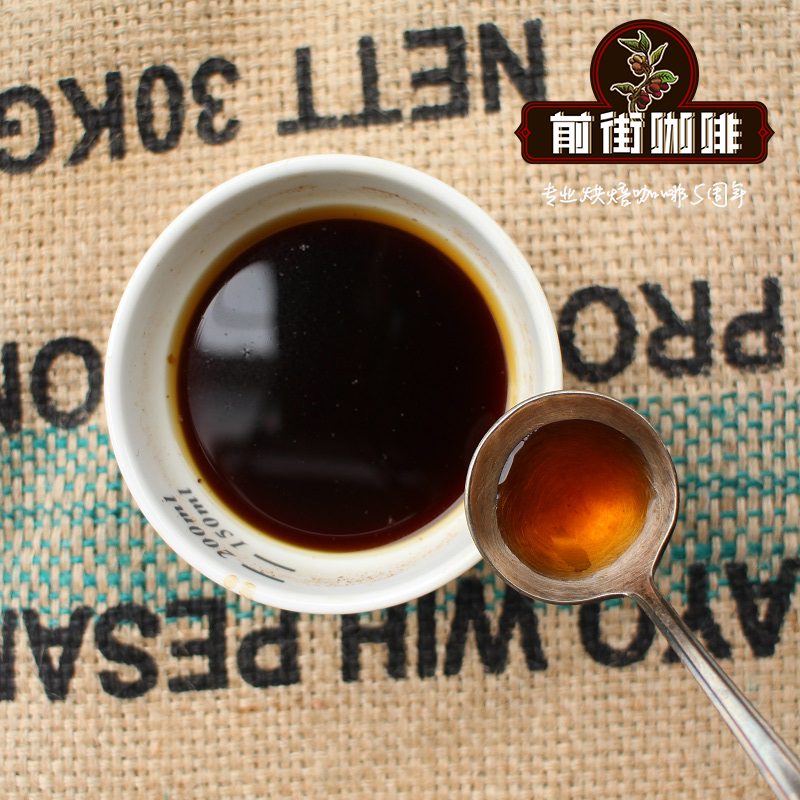A brief Analysis of the advantages of growing Coffee in Brazil, the largest producer of Coffee

Professional coffee knowledge exchange More coffee bean information Please pay attention to coffee workshop (Weixin Official Accounts cafe_style)
Coffee's origin
Coffee is a tropical plant, planted in an area centered on the equator. Planted at about 25 degrees north and south latitude between the Tropic of Cancer. This area is also known as the "bean belt" or "coffee belt."
An elevation of 500-2500 m in the tropics. The temperature is maintained at an average of 15-25 degrees C, which is most suitable for coffee growing conditions. The main origin for South America, Central America, Africa, Asia and Oceania.
Central and South America is the world's largest coffee-producing area. The amount of production here obviously affects the price of global coffee beans. Among them, Brazilian coffee is the country with the largest production in Central and South America and the largest coffee producer. Brazilian coffee can account for more than 30% of the world's production at most. As long as the production of Brazilian coffee increases, the global coffee price may drop sharply. It cannot be underestimated!
However, Brazil's coffee production has actually stagnated, due to the greenhouse effect and natural disasters caused by the decline in production, the decline in the dollar caused by farmers 'profits, oil prices soared coffee fields to grow corn to increase bioenergy, etc., but the most important reason is actually Brazil's domestic coffee consumption continues to rise, is now the second largest coffee consumer, second only to the United States!
Brazilian Coffee Flavor-Soft and Sweet Compared to other countries in Central and South America, Brazilian coffee is grown at a significantly lower altitude, with flat terrain, lack of microclimate, and no shade for coffee trees. Therefore, Brazil has a unique "soft bean" flavor-low acidity, nutty, chocolate sweet, balanced sour and bitter, good body, usually with some wood and earth flavor, and African beans.
China's coffee market is growing rapidly, attracting the attention of producers in the world's largest coffee exporter. Brazil, which used to have a global coffee market share of 80%, now grows about one-third of the world's coffee trees, with an annual output of up to 60 million bags. It is the world's largest coffee exporter and the second largest coffee consumer.
Brazil does not have a reputation for producing high-quality coffee because of its emphasis on production, but in recent years Brazil has begun to focus on fine coffee. The coffee market in China is growing rapidly, but the per capita consumption of coffee is only 0.03 kg, which is a big gap from the world average of 1.25 kg. Coffee is not yet fully popular in China, but with the increasing popularity of coffee culture, the number of people who choose to drink coffee gradually increases, and the market has a large space for development, so it is highly concerned by Brazilian manufacturers.
Brazil's coffee boom poses a huge challenge for coffee farmers elsewhere in the world. Many growers, from Nicaragua to Tanzania, produce less coffee per hectare, have higher fertilizer and labour costs, and export currency exchange rates are weaker than the Brazilian real--the devaluation of the real allows exporters to have more of their own currency for every coffee dollar shipped overseas, which increases the profits of Brazilian coffee farmers.
Many coffee farmers outside Brazil have to base their coffee sales on ICE futures prices. Unfortunately, futures prices are already below their production costs. Chronic losses and limited access to credit have prompted some growers, from Central America to Africa, to leave the industry.
Unlike coffee farmers in other countries who feel depressed, there have been signs of stress on coffee farms more than 1,700 kilometers (1,056 miles) from Brazil's São Paulo Moguiana region to southern Minas Gerais and Serrado, which together account for 70 percent of Brazil's Arabica bean production and are the preferred varieties of international coffee brands such as Starbucks.
Brazilian coffee process
Brazilian coffee also has sun, semi-sun and washing treatment method, and the judgment method is mainly based on the dry and humidity conditions of each farm, so it presents the best flavor of each producing area, very diverse!
But why do most people still think Brazil is dominated by sunburn?
The main reason is that before 1990 AD, almost all parts of Brazil adopted rough sun drying method, resulting in Brazilian coffee beans easy to have earthy and woody flavor, thus making the quality of Brazilian beans poor, damage the image.
However, after 1990, Brazil developed a semi-sun method, which not only shortened the operation time, increased the fruity and sweet taste, but also reduced the chance of coffee beans being stained with odors. The quality was improved a lot, and it was very suitable for brewing as a single coffee!
What kind of treatment method should be used depends on the local humidity conditions! Plantations everywhere treat coffee beans in the way that reduces mold growth! The honey treatment is also a treatment method that Brazil began to try a few years ago. I believe that with the continuous changes in the coffee market, Brazilian coffee will have more innovations.
Important Notice :
前街咖啡 FrontStreet Coffee has moved to new addredd:
FrontStreet Coffee Address: 315,Donghua East Road,GuangZhou
Tel:020 38364473
- Prev

Analyze what kinds of boutique coffee beans have what flavor and taste is fine coffee hand-brewed?
Professional coffee knowledge exchange more coffee bean information Please follow the coffee workshop (Wechat official account cafe_style) Fine Coffee (Specialty Coffee) as a proper term, it was first proposed by Ms. Erna Knustsen, who is known as the godmother of fine coffee, in the Tea and Coffee monthly (Tea Coffee Trade Journal) in 1974.
- Next

The world of coffee is full of Guatemalan cigarette coffee. Have you ever known it? Is it herbal?
Professional coffee knowledge exchange more coffee bean information please pay attention to the coffee workshop (Wechat official account cafe_style) Guatemala also has: tropical rain forest, volcanic geology, plateau valleys and changeable microclimate, coupled with several rainfall patterns and fertile soil, make Guanguo coffee rich in flavor. With the establishment of the Coffee planting and Promotion Committee in 1845, coffee became the place.
Related
- Beginners will see the "Coffee pull flower" guide!
- What is the difference between ice blog purified milk and ordinary milk coffee?
- Why is the Philippines the largest producer of crops in Liberia?
- For coffee extraction, should the fine powder be retained?
- How does extracted espresso fill pressed powder? How much strength does it take to press the powder?
- How to make jasmine cold extract coffee? Is the jasmine + latte good?
- Will this little toy really make the coffee taste better? How does Lily Drip affect coffee extraction?
- Will the action of slapping the filter cup also affect coffee extraction?
- What's the difference between powder-to-water ratio and powder-to-liquid ratio?
- What is the Ethiopian local species? What does it have to do with Heirloom native species?

